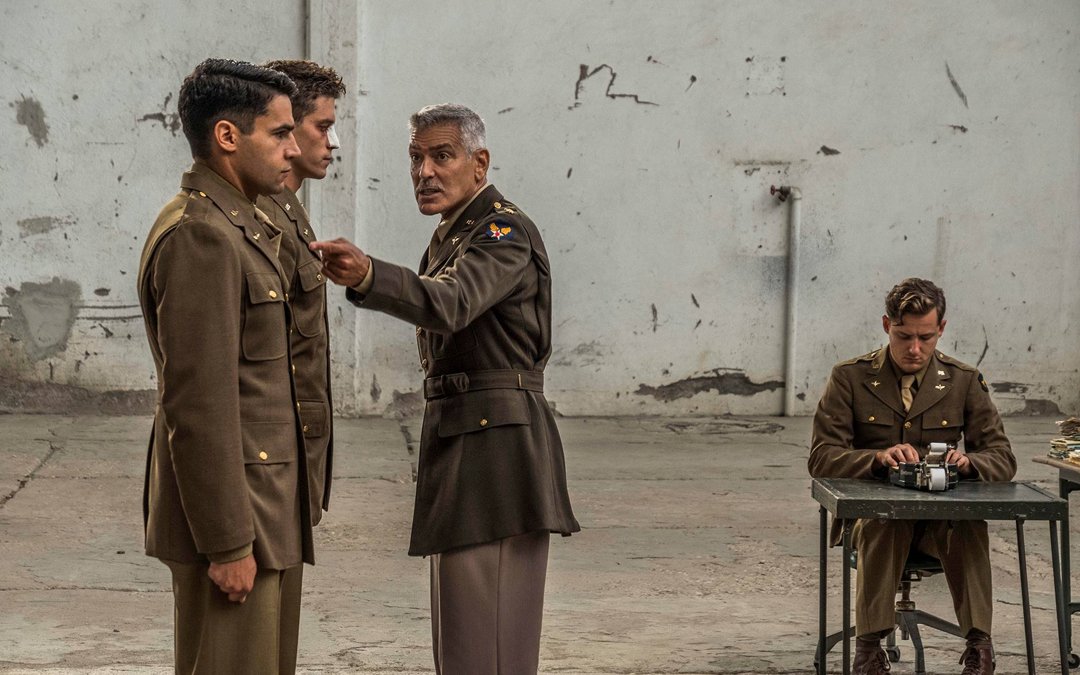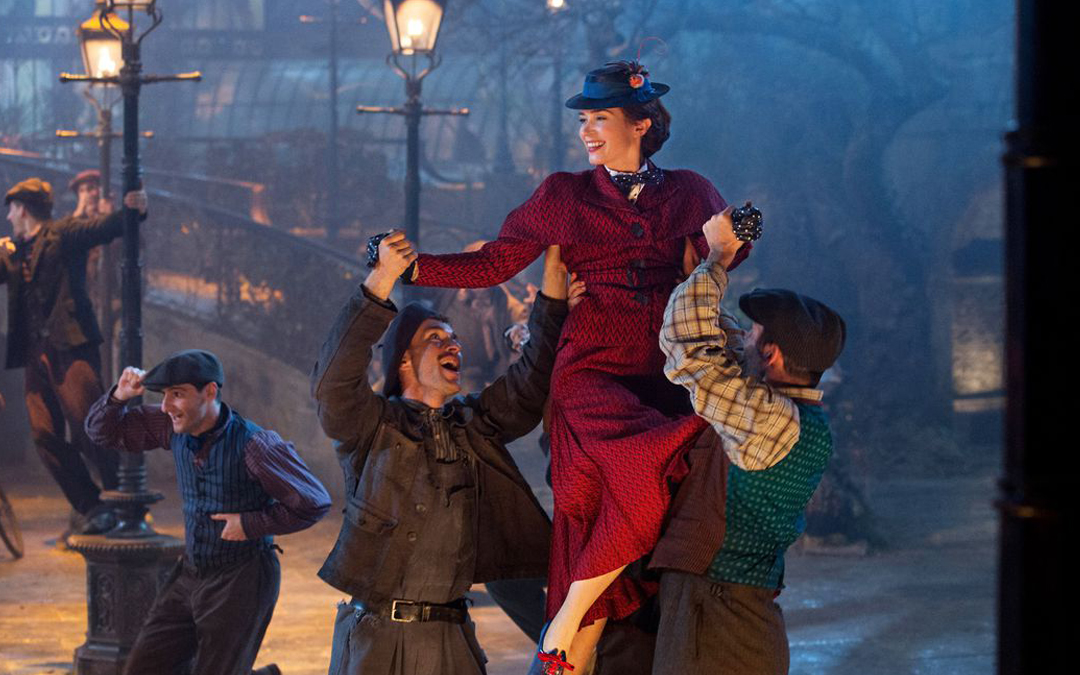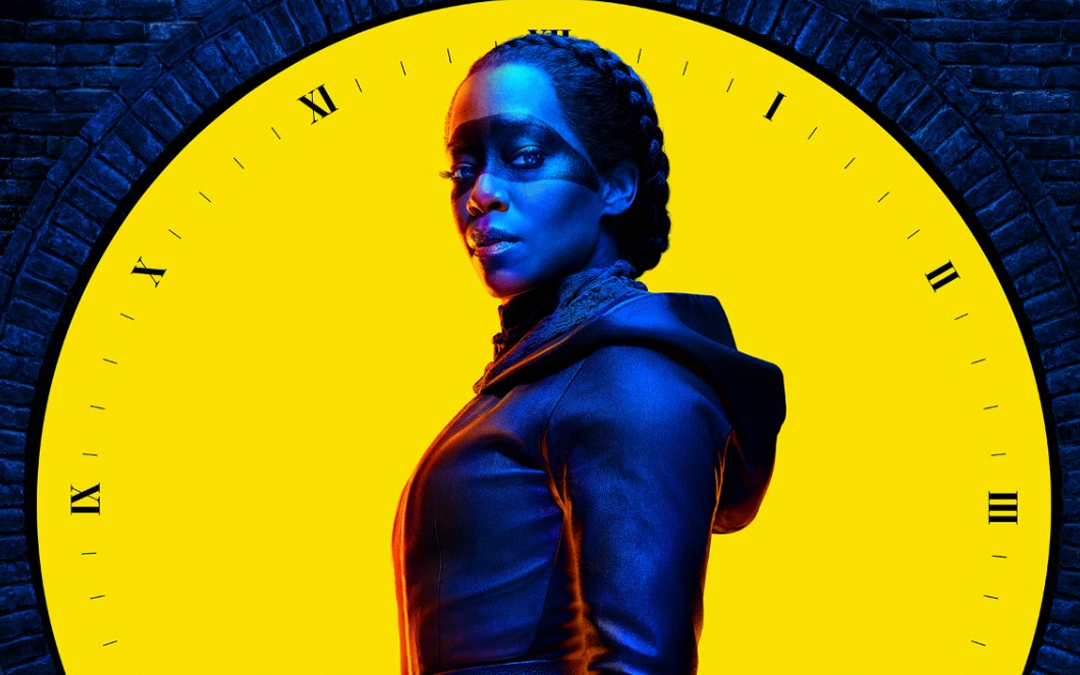All The Write Moves: 'Catch-22'
May 29, 2019
For nearly as long as miniseries have existed, the format has provided opportunities for Hollywood to revisit esteemed novels in greater depth than their previous, standard-length feature film adaptations. Back in the day, this practice was exemplified by the six-hour 1979 miniseries version of James Jones’s novel From Here to Eternity. A generation earlier, the book was adapted into an Oscar-winning 1953 film that ran for a considerably shorter 118 minutes.
This tradition has gained new validity in recent years because of peak TV’s most impressive attributes: big budgets, big stars, and the freedom to include grown-up content. Instead of just rehashing things audiences have seen before, today’s fresh takes on books-previously-made-into-movies enter unexplored territory. Consider Catch-22, the current six-episode Hulu miniseries based on Joseph Heller’s 1961 novel. The miniseries adds many dimensions that were excluded from the well-known 1970 feature version, which was written by Buck Henry and directed by Mike Nichols.
Luke Davies and David Michôd, who wrote the entire Catch-22 miniseries, clearly drew on the 1970 film for inspiration — and for lessons about what Henry and Nichols got wrong. After all, Heller’s material is famously challenging in terms of structure and tone. Given this context, it’s interesting to examine how the approach taken by the miniseries differs from that taken by the feature, because doing so reveals why the multi-episode format is so liberating for literary adaptations.
For those unfamiliar with the source material, Catch-22 (in all of its forms) concerns an American bombardier named Yossarian, whose nerves are shot after flying more than a dozen missions over Europe. While stationed in Italy, Yossarian tries to get out of combat duty by proclaiming that he’s gone insane. Unfortunately, an Army physician explains the military’s “Catch-22” rule — even though voluntarily rushing into danger is an irrational choice, any individual capable of acknowledging such danger is considered too rational for a diagnosis of insanity.
Pretzel Logic
Pervading every version of Catch-22 is the nonsensical double-talk that military officers use to justify absurd behavior. In the miniseries, a strong example of this is a scene featuring a sergeant named Major Major Major (played by Lewis Pullman). Shortly after explaining to his fellow enlisted men that his unusual moniker was chosen by his father as a practical joke, Major Major Major gets confronted by the buffoonish Colonel Cathcart (Kyle Chandler). Because of Major Major Major’s name, the sergeant was accidentally included on a roster of officers slated to participate in a committee. Upon discovering the error, Cathcart promotes Major Major Major to the rank of major, changing the soldier’s identity for no reason except to cover up a clerical error.
Like the maddening rule that gives Catch-22 its title, the scene of Major Major Major’s promotion — featured in the second episode of the miniseries — epitomizes the blend of satire and tragedy that makes Heller’s book such a challenge to adapt. Getting the joke right is relatively easy, simply a matter of juxtaposing ridiculous remarks with dumfounded reactions. Situating the joke is more difficult, because situating the joke involves creating a broader narrative context.
Arguably the biggest difference between the style of the 1970 movie and that of the Hulu miniseries is that Davies and Michôd allow long stretches of straight drama to occur between comedic highlights. Generally speaking, the tone of the 1970 movie fluctuates between dry humor and gut-punch horror. The miniseries employs a much broader palette, taking full advantage of the greater number of hours the writers have at their disposal.
When the Hulu version of Catch-22 clicks, outrageous moments such as Major Major Major’s promotion reverberate because they seem to arise organically from an inherently bizarre situation. Viewers spend time with characters, watching them navigate everything from boredom to fear. Therefore, when something wild happens, it registers as being out of the ordinary. In the 1970 movie, nearly everything that happens onscreen is bizarre. By giving the story room to breathe, Davies and Michôd strive to ground Heller’s extremes in believable reality.
Takeaway: Weird story events land best when juxtaposed with normalcy.
Shock Value
The most memorable image from the 1970 Catch-22 is a death. As a man stands on a diving platform that floats atop the placid surface of a Mediterranean bay, a propeller plane swoops down and strikes the man, instantly pulverizing his torso so that his abdomen and legs linger a moment, before falling down. Similarly, the most jarring image in the first episode of Catch-22 the miniseries is a death. While Yossarian sits in his glass bubble at the front of a bomber during a mission, he watches another plane explode. One of the crewmen from that plane gets launched by the explosion so he lands on Yossarian’s window and stares into Yossarian’s eyes before getting pulled away, to his certain death, by gravity.
Whereas some gory moments in peak TV shows seem to merely elicit startled reactions — think of all those heads getting smashed against stone walls on Game of Thrones — this death scene reminds us that shock value can be high-minded. The moment is not about gore. It’s about Yossarian’s horrified reaction.
Like any other type of empty spectacle, bloodshed without emotional consequences doesn’t advance storytelling. Conversely, shocking violence that means something to the people who experience or witness the carnage is a viable storytelling technique.
Takeaway: Emotional repercussions give bloody scenes real impact.
Mind Your Tone
Tone is a problem throughout the 1970 version of Catch-22, but in retrospect, it’s understandable why Henry and Nichols ran into trouble. Among other considerations, they wanted to include as many key moments as possible from Heller’s book in their two-hour movie. Some important scenes chewed up copious amounts of screen time, while others, out of necessity, had to be rushed or excluded. The parameters of telling a feature-length story made it difficult for Henry and Nichols to properly set the mood for their take.
This is the area in which Davies and Michôd have the greatest advantage over their predecessors. Take note of the way the first episode of the miniseries opens. First, viewers see flashes of a strange scene, with a blood-spattered and completely naked Yossarian walking through smoking battle wreckage. Next, the miniseries cuts back in time to Yossarian’s military training, during which confounding encounters with training officer Lieutenant Scheisskopf (played by Clooney) revealed the gulf between Yossarian’s worldview and the military mindset.
The Scheisskopf scenes are mostly played for laughs, with the Lieutenant perpetually belittling Yossarian — even though the enlisted man is secretly sleeping with the officer’s wife. By taking time to explore Yossarian’s life before his travails in Europe, Davies and Michôd establish two things: 1) Yossarian regards the military with contempt, and 2) He thinks he can work the military system to his advantage.
Taken together, these opening elements — the bewildering prologue and the comical training sequence — establish a nuanced tone. We’re meant to watch the whole show from the same perspective Yossarian conveys in the prologue: What the hell is happening? And whenever it seems Yossarian has figured out all the angles, we’re meant to remember that Scheisskopf, despite his flamboyant idiocy, had nearly limitless power over Yossarian. In sum, the opening beats of the miniseries express the project’s antiwar sentiments in a dreamlike, but thematically consistent style that mimics the impressionistic nature of the source material.
Takeaway: One obligation of a pilot episode is establishing tone.
Written by: Peter Hanson
Peter Hanson is a Los Angeles-based writer, filmmaker and teacher. He directed the screenwriting documentary Tales from the Script, and he teaches at Pepperdine University and UCLA Extension. He provides script consulting at www.GrandRiverFilms.com.- Topics:
- Discussing TV & Film




